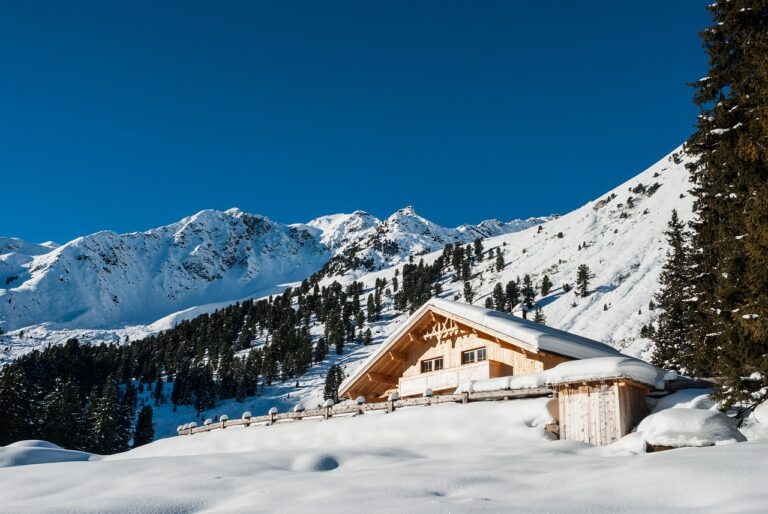Weather Stripping for Community-Owned Farms: 11xplay sign up, Laser247 com, World777 register
11xplay sign up, laser247 com, world777 register: Weather Stripping for Community-Owned Farms
When it comes to managing a community-owned farm, there are a lot of factors to consider to ensure the success and sustainability of the operation. One often overlooked aspect is the maintenance of the farm’s buildings and structures, particularly when it comes to weatherproofing. Weather stripping is a cost-effective and relatively easy way to protect your farm buildings from the elements, saving you money on heating and cooling costs and extending the lifespan of your structures. In this article, we will explore the importance of weather stripping for community-owned farms and provide some tips on how to get started.
Why Weather Stripping is Important for Community-Owned Farms
Weather stripping is a simple but effective way to prevent air leaks and drafts in your farm buildings. Poorly sealed windows, doors, and other openings can allow cold air to enter during the winter months and hot air to infiltrate during the summer, making it more difficult to maintain a comfortable temperature inside the buildings. This can lead to higher energy bills as your heating and cooling systems have to work harder to keep the space at a consistent temperature.
In addition to increasing energy efficiency, weather stripping can also help to protect your farm buildings from moisture and mold growth. By sealing gaps and cracks around windows and doors, you can prevent water from seeping in and causing damage to the structure. This can help to extend the lifespan of your buildings and reduce the need for costly repairs down the line.
Tips for Weather Stripping Your Farm Buildings
1. Inspect Your Buildings: Before you start weather stripping, take the time to inspect your farm buildings for any gaps, cracks, or other areas where air may be able to enter or escape. Pay close attention to windows, doors, and any other openings that could be a potential source of drafts.
2. Choose the Right Materials: There are many different types of weather stripping materials available, including foam, rubber, and vinyl. Each material has its own pros and cons, so be sure to choose the one that is best suited to your needs and budget.
3. Measure Twice, Cut Once: When installing weather stripping, it’s important to measure carefully to ensure a proper fit. Be sure to follow the manufacturer’s instructions for cutting and installing the weather stripping to ensure a tight seal.
4. Seal All Gaps: Don’t forget to seal all gaps and cracks, no matter how small they may seem. Even a tiny hole can let in a significant amount of air, so be thorough in your weather stripping efforts.
5. Consider Professional Installation: If you’re not confident in your DIY skills, or if you have a large farm with multiple buildings to weather strip, you may want to consider hiring a professional to do the job for you. They can ensure that the weather stripping is installed correctly and provide recommendations for the best materials to use.
6. Regular Maintenance: Once you’ve installed weather stripping on your farm buildings, be sure to inspect it regularly for any signs of wear and tear. Replace any damaged weather stripping as needed to keep your buildings well-protected.
By taking the time to weather strip your farm buildings, you can enjoy a more comfortable and energy-efficient space while also extending the lifespan of your structures. Whether you’re a small community garden or a larger farm operation, weather stripping is a simple and cost-effective way to improve the efficiency and durability of your buildings.
FAQs
Q: How long does weather stripping last?
A: The lifespan of weather stripping can vary depending on the type of material used, the environment in which it is installed, and how well it is maintained. Generally, weather stripping can last anywhere from 3 to 10 years before needing to be replaced.
Q: Can weather stripping help with noise reduction?
A: While weather stripping is primarily used to seal air leaks, it can also help to reduce noise infiltration from outside. Thicker weather stripping materials may be more effective at blocking out sound.
Q: Are there any government incentives for weather stripping?
A: Some government programs and incentives may offer rebates or tax credits for energy-efficient upgrades, including weather stripping. Check with your local government or utility provider to see if you may qualify for any incentives.
Q: Can weather stripping be installed on all types of windows and doors?
A: Weather stripping can be installed on most types of windows and doors, including wood, metal, and vinyl. Be sure to choose the right type of weather stripping material for the specific application to ensure a tight seal.
Q: Does weather stripping require any special tools for installation?
A: Weather stripping can typically be installed with basic tools such as a tape measure, utility knife, and caulking gun. Some types of weather stripping may require additional tools or adhesive for installation, so be sure to read the manufacturer’s instructions carefully.
In conclusion, weather stripping is a simple and cost-effective way to improve the energy efficiency and durability of your farm buildings. By taking the time to properly seal gaps and cracks, you can enjoy a more comfortable and sustainable space for years to come.







